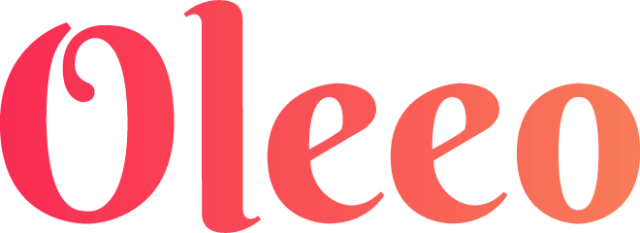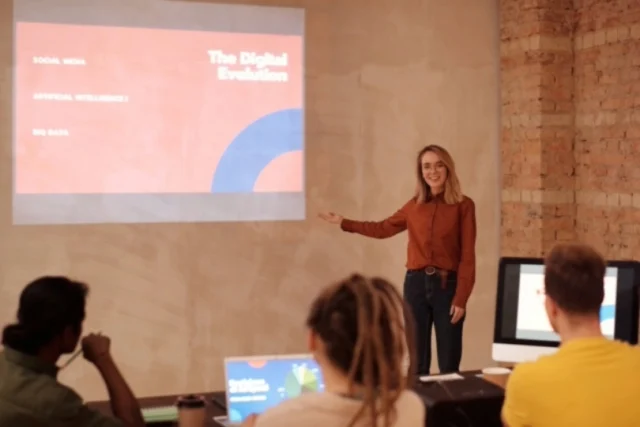What is Blind Recruitment? A Guide To Bias-Free Hiring

Blind hiring can be an effective part of a more holistic strategy to increase diversity, equity, and inclusivity (DE&I) in your organization.
DE&I has become a significant topic in recent years. Part of this drive has been straightforward good intention—businesses wanting to do the right thing (and be seen to be doing the right thing).
However, significant research in recent years has highlighted how an effective approach to diversity, equity, and inclusion is simply good business. There is now an accepted and evidence-based consensus that diverse teams are more committed, more productive, more innovative, and thus more profitable.
What business wouldn’t want all that?
So, read on to find out more about one tactic that can contribute to better DE&I: blind recruitment.
What is Blind Recruitment and How Does It Work?
Blind recruitment (or blind hiring) is based on a simple premise: by anonymizing applications and CVs and omitting other details, you can Reduce Recruitment Bias – whether conscious or unconscious – impacting upon the selection process. And that, in turn, can help you to recruit the best Talent.
The following applicant details might be removed from a CV or application as part of a Blind Screening process:
- Gender
- Age
- Certain educational details (e.g., which university attended)
- Ethnicity details
- Name (because this might trigger multiple biases)
The applicant’s photo (if included) will also usually be hidden because, like a candidate’s name, it might confer multiple other identity clues – again triggering bias.
This is, of course, not a definitive list. Blind applications should be part of a broader DE&I push where organizations have monitored and identified precisely where a better effort is needed to promote diversity.
They should be curious about how and where they are underrepresented – at all levels of the organization. Such strategic-level insights should then inform exactly how they go about making the process ‘blind’ (i.e., what details they redact or remove).
And, as we’ll see below, there are many other diversity (and bias) criteria that businesses may identify and need to prioritize when blind hiring.
What is Unconscious Bias?
Conscious bias is when people have prejudices that they are aware of. These will often show in what people say or how they behave. As such, they are easier to identify (in ourselves and other people) and see the impact of. And, because they are more easily perceivable, the need to address and challenge them can also be clearer.
However, we are not aware of our unconscious biases. They influence our behavior in ways that are harder to pinpoint. Indeed, we usually do not even realize how they are shaping our reactions, values, and preferences. And that makes them difficult to tackle.
Unconscious bias can relate to all the same criteria as conscious bias. Consider the following examples:
- Gender
- Ethnicity
- Social class
- Education (e.g., preferring certain establishments over others)
- Disability
- Neurodiversity
- LGBTQ+
The causes of such unconscious biases are complex and varied. They may be based on societal and cultural stereotypes or passed on through interactions with others who hold them. They are usually implicit rather than explicit. And, because they lurk in our unconscious, they can be deep-rooted.
There are various types of unconscious bias. This list identifies some that can influence a recruitment process.
- Confirmation bias: unconsciously prioritizing evidence that supports our existing view of the world.
- Similarity bias (also known as affinity bias): unconsciously preferring the familiar: that which is like us.
- Gender bias: unconscious gender beliefs based on social traditions, cultural values, and personal experience.
- Attribution bias: A tendency to incorrectly attribute the behavior of others to the wrong reason. For instance, low education performance may be unconsciously viewed as evidence of laziness or poor potential (rather than a reflection of wider socioeconomic disadvantage).
- Attractiveness bias: unconsciously preferring that which is more attractive or ‘perfect’.
- Ageism: unconscious discrimination of people based on age. For example, there may be a presumption that older people are less adaptive.
- Halo effect: an unconscious tendency to extrapolate one impressive feature of an individual to the rest of their profile: we view them with a halo.
There are many more. The above gives just a flavor of how different unconscious biases may inform our decision-making – especially when it comes to recruitment. Any one of these can place a drag on Diversity Recruiting, and when combined with others, that drag only intensifies.
Unconscious bias is increasingly recognized as a barrier to embedding DE&I in organizations. Over recent years businesses have increasingly seen addressing this not only as a moral corporate responsibility (e.g., the right thing to do) but also as a corporate necessity – to help drive team performance.
How to Phase in a Blind Recruitment Process
Embedding DE&I in your business is a long-term process, often involving deep cultural change. It cannot be fixed via a handful of tweaks and tactics.
Blind recruitment is best seen as part of a wider commitment – one possible tactic to support a broader strategy. It is not a solution in and of itself.
So, with that in mind, what might be involved in phasing in a blind recruitment process in your organization?
1. Analyze and enquire
You need to be informed so you can adopt the best approach for your business. Be curious about how diverse your teams currently are. This must be your starting point.
Analyze the composition of your teams. Recruiting Software tools can support this. They allow you to benchmark your diversity against other organizations (nationally and more locally). Are there groups that are particularly underrepresented?
Why might that be? Evaluate your recruitment processes to explore what’s going on. There could be an issue with any of the following.
- Are you attracting a diverse range of applicants? Might unconscious bias in job adverts be putting some groups off?
- Are you unconsciously filtering out diversity when short-listing from CVs and applications?
- Are you limiting diversity with the final selection and appointment?
- Or perhaps you are recruiting diversely but have an issue with retention (possibly indicative of a cultural issue)?
Unconscious bias can impact any of these stages. Once again, technology can help you to monitor all stages of your HR pipeline. Applicant Tracking System (ATS) software gives you visibility over this.
You need a curious and evidence-based approach to identify where the issues lie. (And, of course, there may be issues at all these stages!) You then need to develop processes that help to address this.
2. Implement anonymization techniques
Understanding what unconscious biases may be impacting your organization’s DE&I may prompt many possible actions across many spheres.
Blind recruitment, as one possible action, helps with the screening and selection of job applicants. Implement anonymization processes that support your broader inclusivity objectives, e.g., by hiding particular criteria about each applicant.
Start with the application form itself. Use a very standardized format, capturing the most pertinent details. Then consider removing certain information and details when presenting applications to your hiring teams (e.g., concealing names, education details, ages, and such things).
Such anonymization can be done manually. However, it is much easier to manage with an Automated Tracking System (ATS), which can often automate this step, also ensuring that it is applied consistently and transparently.
Your hiring teams will see just the key information about each candidate, facilitating a non-biased short-listing process.
3. Inclusive interviews
There is little point in removing unconscious bias from the shortlisting process while doing nothing to prevent its potential damage elsewhere—for example, during the interview process.
A truly anonymous interview is difficult. After all, the candidate is there, in front of you!
However, steps can be taken, even here, to reduce the risk of unconscious bias. Even if the entire process cannot be anonymized, the following steps can nevertheless bring some ‘blind recruitment’ principles into the interview room.
- Stick to a predetermined and consistent set of interview questions (with an accompanying scoresheet to ensure consistent appraisal of each applicant’s competencies).
- Avoid personal issues and avoid straying far beyond the key questions.
- Ensure the interview panels themselves consist of diverse individuals with different backgrounds and perspectives.
- Provide training to hiring managers, highlighting the risk of bias.
Such steps do not make interviews completely ‘blind’. But they can help to mitigate the risks of unconscious bias.
4. Embed as part of a wider commitment
Finally, blind recruitment must be part of a broader commitment to DE&I.
Blind recruitment alone will not ensure a truly diverse team. For that, you need to nurture a broader culture that values diversity – one that enables people with different backgrounds and experiences to thrive.
For example, if you are to attract a diverse pool of candidates and, once appointed, retain diversity on your team, you will need to also consider the following measures.
- Ensure job adverts are crafted to minimize unconscious bias and encourage a spectrum of applicants.
- Ensure your current team understands the value of diversity, equity, and inclusivity while also appreciating the dangers of unconscious bias.
- Ensure that support, training, and coaching is in place to enable your entire team to feel valued (and so want to stay!)
- Ongoing curiosity to analyze and benchmark your DE&I against other organizations – and to act on findings.
Blind recruitment can only be one part of your response to the challenge – albeit a very useful one.
Blind Recruitment: Advantages and Disadvantages
So, what are the pros and cons of blind recruitment?
Advantages
- It can reduce the impact of unconscious bias when screening applications. If certain criteria are hidden from hiring teams, they are much less likely to unconsciously discriminate because of them. It can, thus, help to pull greater levels of diversity through your recruitment pipeline.
- It helps recruiters to focus on what applicants might be able to achieve in the future at the organization rather than basing decisions more heavily on an applicant’s background. For example, blind recruitment is often accompanied by some sort of skills assessment: what can a candidate do now?
- As part of a broader process, it can help you and your team to understand the nature and impact of unconscious bias. For example, it can help to make your hiring managers more open-minded and challenge erroneous beliefs.
And, with the right technology in place, blind recruitment needn’t be onerous. Software like Oleeo’s can make the process streamlined, consistent, and highly transparent.
Disadvantages
- Blind recruitment is not a silver bullet. It needs to be part of a wider process of reflection, training, and coaching.
- Blind recruitment may not address the root of the problem in your organization. Perhaps it’s the interview stage where unconscious bias kicks in most. Or maybe your job adverts aren’t attracting diversity? Or maybe your Company Culture is pushing diverse employees away? You must maintain a curious mindset and keep analyzing DE&I metrics across your business. Again, software support can be invaluable here.
- It does not guarantee more diverse shortlisting. It purely means that, based on the applications you receive, unconscious bias is less likely to influence the decision.
- It can feel like the individual’s personality is being lost. It can be hard to get a sense of who a person is from a heavily anonymized application – and how they might ‘gel’ with the wider team.
Finally, some people consider the term ‘blind recruitment’ itself to be indicative of unconscious bias (ableism) and prefer the term ‘anonymous recruitment’.
Utilize Blind Recruitment Software to Eliminate Unconscious Bias
Blind recruitment can certainly support your DE&I efforts. However, it should be introduced thoughtfully – and as part of a broader strategy.
Recruitment software like Oleeo can be a great help. It allows you to monitor and visualize your current DE&I performance and the efficacy of any changes introduced. It can also help you directly tackle unconscious bias – for example, assisting you in crafting inclusive job adverts and anonymized applications.
Diversity Recruiting Platforms from Oleeo can streamline, automate, and standardize your DE&I efforts while giving you visibility over their effectiveness.
Why not book a consultation and see how we can help you today?
FAQs
Why is blind hiring important?
Blind hiring can help an organization to reduce the impact of unconscious bias on its recruitment process. Removing personal information (relating to criteria such as gender, race, and social background) can lead to more merit-based appointments. In theory, it can thus result in more appointments.
What is a blind interview?
Steps can be taken to manage the risk of unconscious bias influencing interviews. Standard questions should be agreed upon in advance, supported by a standardized score sheet, identifying the key competencies sought.
These are sometimes referred to as blind interviews. While it does not guarantee the removal of unconscious bias, it does help the interviewing panel to focus on competencies.
How else can I ensure a bias-free recruitment process?
Consider the entire recruitment (and retention) pipeline. Are your job adverts free of unconscious bias? Are your interview panels committed to avoiding unconscious bias? Take a holistic view. Use data to pinpoint where your recruitment process may not be bias-free.
Some businesses even adopt a more proactive approach here and offer coaching to candidates from certain backgrounds as they move through the recruitment process.



